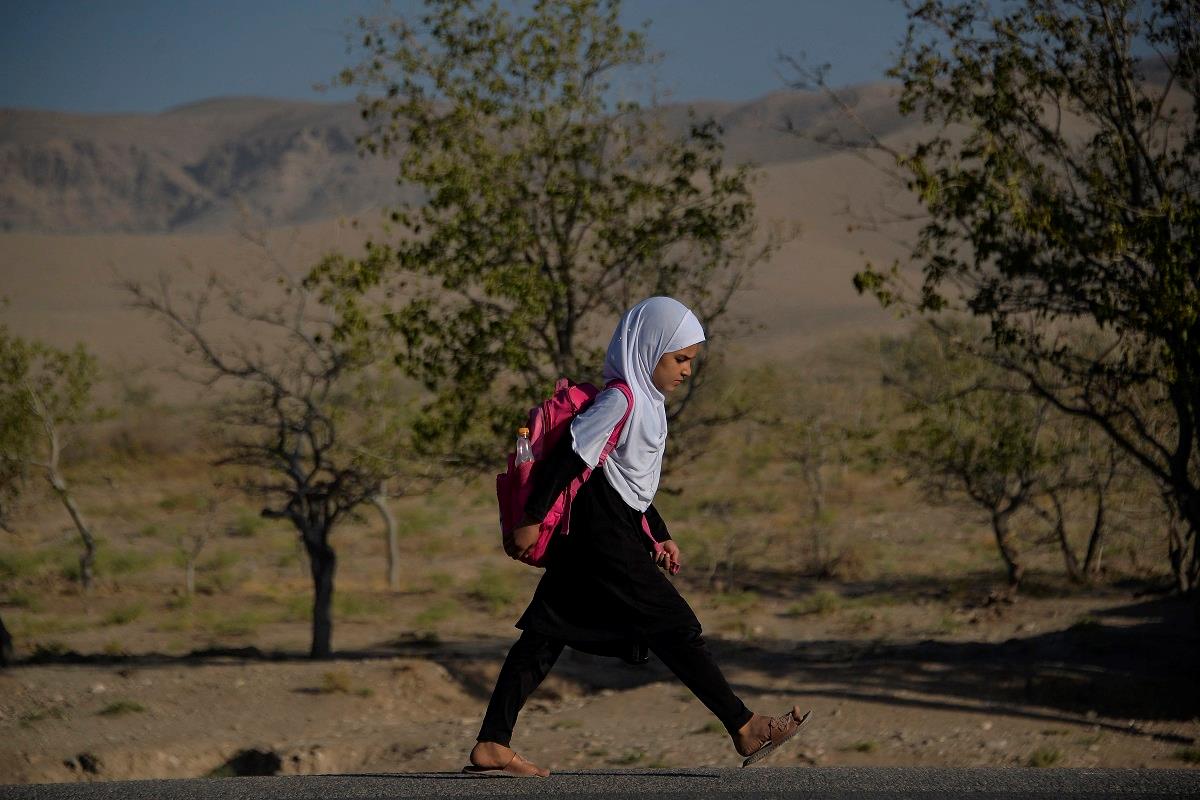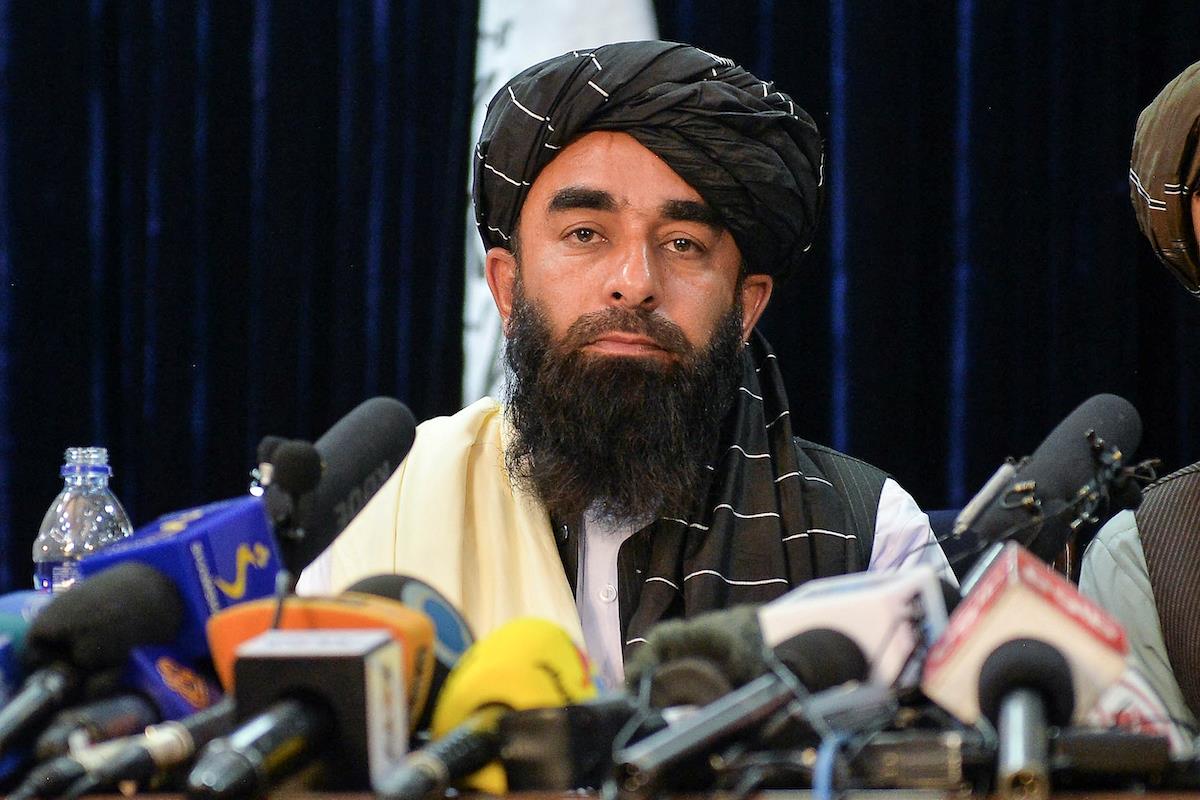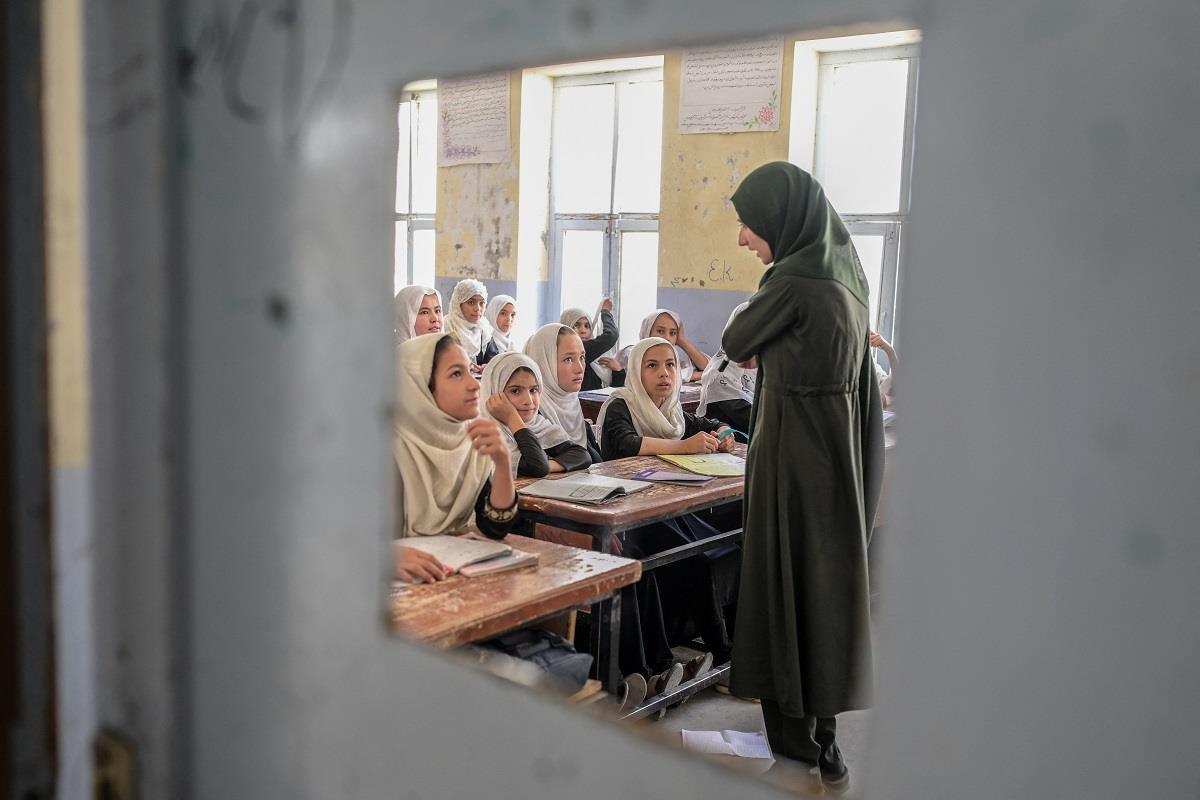(MENAFN- Asia Times) KABUL – When the US overthrew the last Taliban-led Regime in 2001, the international community poured millions of dollars into the newly established Afghan government to rebuild the country, including the education system.
School enrolment in grades one to 12 saw a tenfold rise, from about a million children with almost no girls in 2001. By 2021, more than 9 million students were at school.
Now, almost two months after the Taliban retook Kabul, the position of girls in the education system is dire.
On September 17, after a one-month pause, the Taliban's Ministry of Education announced a resumption of secondary schools only for boys in grades seven to 12 and told all male teachers and students to attend classes.
“Up to 300 girls studied at the secondary classes in our school,” Wali Jan, principal of Babaji girls' school in Laghman's Qarghayi district, told Asia Times.
“Now that the Taliban banned girls in higher grades from attending school, the number of girls in primary schools has also decreased to a great extent.”
Almost half of the girls in primary classes had not appeared in Wali Jan's school 20 days after classes resumed.
When I visited the school recently, girls were playing in the yard instead of sitting in classrooms. Teachers told me they had not yet prepared schedules because many teachers were absent due in part to lack of funding.

An Afghan walks to school on the outskirts of Herat on September 21, 2021. Photo: AFP / Hoshang Hashimi
“I have 13 teachers in just one shift,” the principal said.“Only five of them are coming to school regularly.”
Due to the shortage, Wali Jan decided to assign more than one subject to each teacher and eliminate some subjects from the curriculum. Still, there are not enough teachers for all the classes.
School teachers in almost all provinces have not been paid for July, August and September. Local education authorities in Qarghayi district ordered teachers to attend school but the Taliban government has not said clearly when and how they will get paid.
“Teachers are supporting their families with the salary. Thus, they choose to go to other types of work to earn a living,” the principal said.
The salaries problem is in part because the country's $9.5 billion in foreign exchange assets, representing nearly all the central bank's reserves, were frozen by the US. Meanwhile, major donors including the World Bank and USAID halted their funding.
Western donors have predicated a restoration of their aid, at least in part, on guarantees that women's rights will be upheld, including education for girls.
This is not happening. Wali Jan's 300 girl students in grades seven to 12 now have to stay out of school for an uncertain time – maybe forever.
Mina, a 15-year-old student from a neighboring village, was studying at grade eight of Babaji high school. She, like millions of other girls, is facing the loss of education, depression and boredom at home.

Taliban spokesperson Zabihullah Mujahid said the Taliban is working on a mechanism for a safer and better educational environment for girls. Photo: AFP / Hoshang Hashimi
“I miss my school,” Mina told Asia Times“I may not be able to go to school again. This makes me very sad.”
Mina says she will not have the opportunity to study at home either.“There are no books at home and no one to study the books with.”
Education activist and founder of the Kabul-based Charmaghz mobile libraries Freshta Karim says barring girls from school is having a huge mental impact on them.
“They are not able to process why they are not allowed to go to school while their male peers are allowed,” Karim says.
“When teenagers don't process situations like this, it internally impacts them and can have huge mental health consequences such as depression for some children.”
Karim also believes that the girls who are not going to school will forget much of what they have learned.“For many of them, catching up will be difficult even if their school reopens.”
Community elders think their efforts to promote girls' education and protect girls' schools in previous years are in danger of being wasted with the change in regime.
“We opened the only girls' school in the nearby village with so much resistance from everyone,” Asrudin Khan, a community elder in Qarghayi district told Asia Times.“We then had to convince families to send their girl children to school.”

Afghan girls attend a class in a school in Kandahar on September 26, 2021. Photo: AFP / Bulent Kilic
The school graduated five batches of grade-12 students, a few of whom were appointed as contract-based teachers in the school. Secondary education at Babaji high school is now at the risk of permanent closure.
“Officials at the district office tell us to wait until the Islamic Emirate makes a decision at Kabul about the girls' education in the country,” Khan added.
Fazal Rahman Mukhlish, a teacher at Qarghayi high school, said that even boys are not coming to school after schools reopened.“There is an overall depressing sense of uncertainty among the students.”
“It has been around 20 days now and we are not able to conduct classes because very few students turn up on daily basis.”
Local Taliban authorities have told principals in the province that the Islamic Emirate will come up with a“mechanism” for girls' education. Until then, girls in secondary schools should remain out of school, they said.
The US-led sanctions have already had a devastating humanitarian impact, pushing the economy to the brink of collapse and early indications of a coming famine. Afghanistan's education system is now hostage to this geopolitical standoff.
Zabihullah Mujahid, the Taliban's spokesman and the acting deputy minister of information and culture, said on September 20,“We are working on a mechanism for a safer and better educational environment” for girls.
The Taliban has said they will provide some form of education to girls but will implement new parameters, including segregated classes, hijab-wearing requirements and only female teachers in girls' classes.
Local authorities, in meetings with principals and some teachers, dictated that the male teachers must grow beards and wear turbans. Some even hinted that students will be asked to do the same.
MENAFN09102021000159011032ID1102943113
Legal Disclaimer:
MENAFN provides the information “as is” without warranty of any kind. We do not accept any responsibility or liability for the accuracy, content, images, videos, licenses, completeness, legality, or reliability of the information contained in this article. If you have any complaints or copyright issues related to this article, kindly contact the provider above.